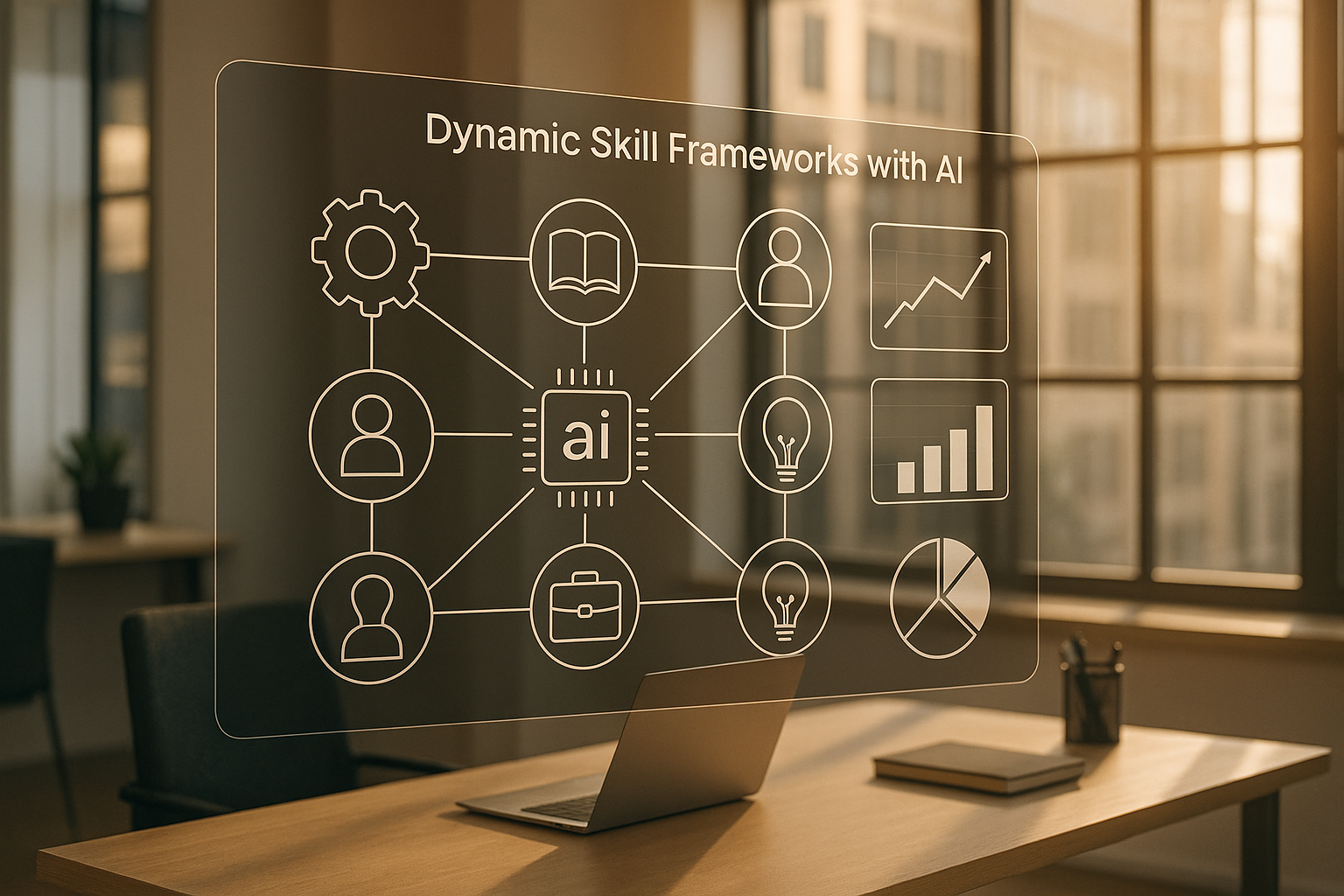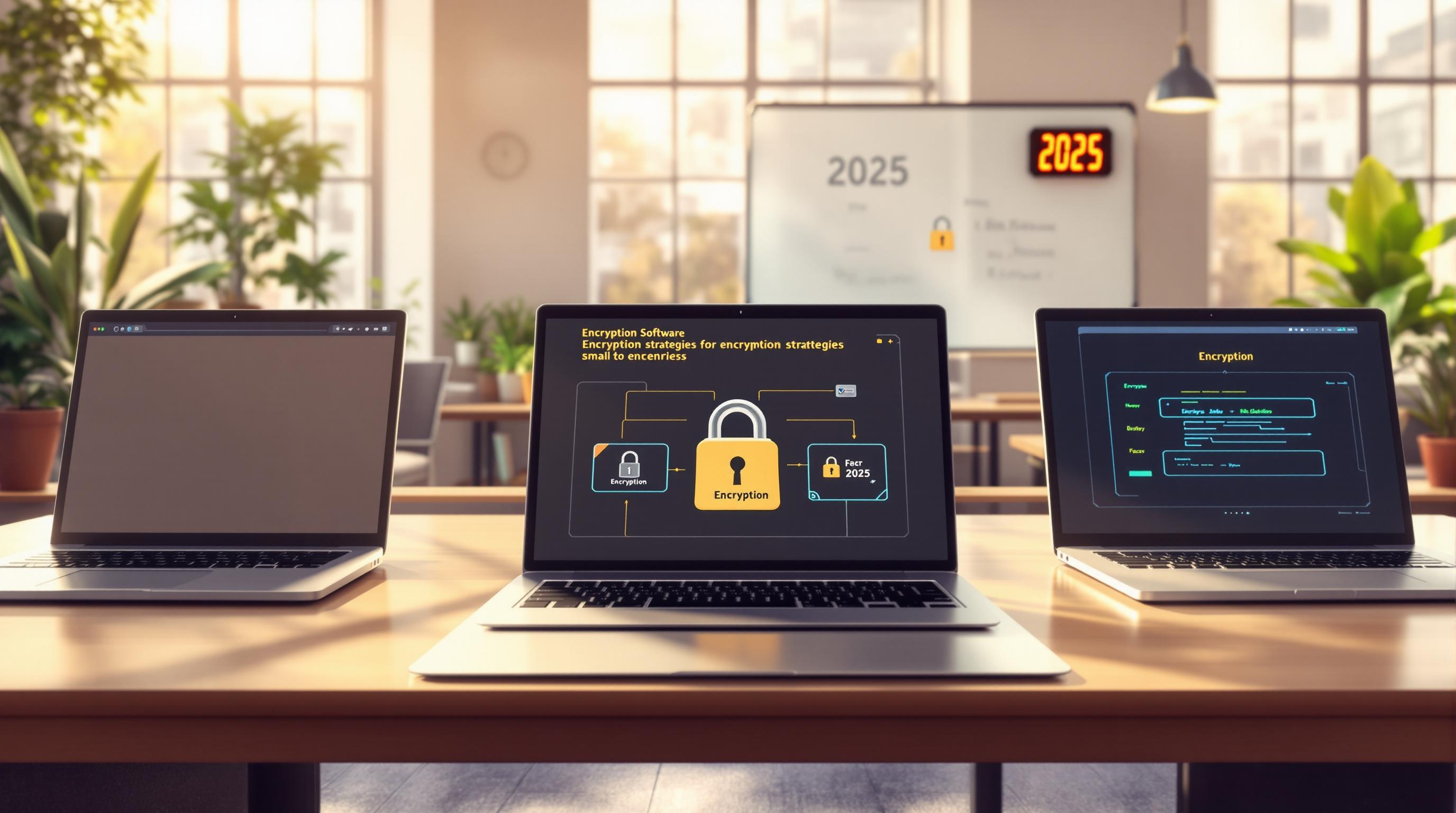Struggling with cross-border data compliance? Here’s how 5 AI-powered tools can help you navigate complex regulations like GDPR and CCPA while securing your data:
- Policy Automation Systems: Automate policy enforcement, reduce incidents by 83%, and ensure real-time compliance adjustments.
- Blockchain Data Transfer Tools: Use tamper-proof records and advanced encryption for secure, compliant data transfers.
- Secure Virtual Data Rooms (VDRs): Centralized control for international data, cutting audit findings by 62%.
- Compliance Monitoring Systems: Real-time tracking and automated evidence collection to simplify audits.
- Data Privacy Computing Tools: Analyze encrypted data without decryption for maximum security and compliance.
Quick Comparison
| Tool | Key Feature | Compliance Impact |
|---|---|---|
| Policy Automation | AI-driven enforcement | 83% fewer incidents |
| Blockchain Tools | Decentralized data transfer | 40% cost savings on compliance |
| Virtual Data Rooms | Granular access control | 62% fewer audit findings |
| Monitoring Systems | Real-time tracking | 76% fewer incidents |
| Privacy Computing Tools | Encrypted data analysis | 83% better compliance |
With these tools, businesses can streamline compliance processes, secure data transfers, and reduce manual efforts - all while staying ahead of evolving regulations.
Demystifying GDPR Encryption: Securing Data at Rest and in Transit
1. Policy Automation Systems
Policy automation systems offer practical solutions for managing the challenges of cross-border encryption requirements. They bring automated policy management to life through three main features:
These tools simplify compliance with capabilities like Puppet's Policy as Code solution. For example, it enforces role-based access controls and AES-256 encryption settings globally, cutting cross-border incidents by 83% [9].
Automated enforcement ensures quick detection and correction of non-compliant configurations - within just 15 minutes [9]. This speed is especially important when handling data transfers between regions with conflicting regulations.
| Feature | Impact | Performance Metric |
|---|---|---|
| Automated Policy Enforcement | Ensures consistent compliance across regions | 83% reduction in cross-border incidents [9] |
| Real-time Monitoring | Speeds up compliance checks | 79% faster audit response times [2] |
| Self-healing Configuration | Automatically resolves issues | 15-minute remediation window [9] |
One standout example comes from a Fortune 500 bank in the financial sector. They used Puppet to manage PCI DSS compliance across 14 jurisdictions, achieving 98% compliance adherence [7].
"Modern systems incorporate ML for predictive compliance by analyzing global regulatory updates, processing 500+ legal documents daily. This capability enables organizations to stay ahead of regulatory changes while maintaining robust encryption standards." [8][2]
This predictive approach directly tackles the complexities of regulations mentioned earlier.
Key factors for success include:
- Pre-deployment Validation: CI/CD integration prevents non-compliant configurations from going live.
- Global Compliance Tracking: Real-time monitoring across more than 60 frameworks ensures accountability.
- Dynamic Policy Updates: AI-driven adjustments are made within 72 hours of new laws being introduced.
For instance, Akitra's pre-built templates for over 20 frameworks can cut certification preparation time by 40% [1][2].
2. Blockchain Data Transfer Tools
Blockchain-based tools are reshaping cross-border data compliance by leveraging decentralized systems and advanced encryption. These tools enhance policy automation by adding unchangeable transaction records, which help meet audit standards across different regions.
IBM Hyperledger Fabric is a key player here, offering enterprise-ready compliance templates [2]. Its benefits include:
| Compliance Metric | Performance Impact |
|---|---|
| Audit Speed | 68% faster compliance audits [2] |
| Security Improvements | 92% fewer unauthorized access incidents [4] |
| Cost Savings | 40% lower compliance expenses [3] |
Another example is DARPA’s clinical trials program, which cut costs by securely transferring encrypted health data internationally. This was achieved using privacy-focused verification methods [3].
Building on the earlier compliance models, Duality Technologies' SecurePlus platform merges Fully Homomorphic Encryption (FHE) with blockchain technology [3]. This setup enables:
- Real-time GDPR compliance using self-destructing smart contracts
- Secure data transfers through tokenization
"Through multi-party computation and split-key cryptography, modern blockchain platforms achieve compliance across conflicting jurisdictional requirements while maintaining FIPS 140-2 validated encryption standards during data exchange." [1][3]
Fortanix DSM introduces a different approach with region-specific Hardware Security Modules (HSMs) [3][6]. These modules automatically rotate encryption keys every 72 hours and adapt instantly to cross-border routing changes [4], ensuring compliance with local data laws.
Lastly, AWS Managed Blockchain incorporates GDPR assessment workflows [6]. AI-powered smart contracts enforce compliance rules, maintain audit trails, and reduce human error. To fully benefit from these tools, organizations should establish strong governance policies and regularly audit their smart contracts.
3. Secure Virtual Data Rooms
Secure Virtual Data Rooms (VDRs) leverage blockchain's audit capabilities to offer centralized control for compliance across multiple jurisdictions. Today, 75% of global enterprises rely on these systems for international transactions [6].
Protegrity's Healthcare Data Vault is a prime example of modern VDR technology, featuring FIPS 140-2 validated encryption. One major US health insurer saw a 62% drop in HIPAA audit findings after adopting this solution [5]. The platform includes several key security features:
| Security Feature | Compliance Benefit |
|---|---|
| Real-time Access Logs | Aligns with GDPR Article 30 requirements |
| Secure Data Analysis | Allows cross-border analysis without data decryption |
| Granular Access Controls | Leads to a 47% drop in regulatory violations [5] |
These platforms automatically adjust encryption levels to meet regional requirements, such as using GDPR-grade AES-256 encryption for EU data transfers while ensuring compliance with CCPA for US operations [1][3].
Modern VDRs also provide secure environments for data processing, helping organizations automate compliance across multiple regions [3][6]. Using policy-driven VDRs, companies can significantly reduce compliance incidents through automated enforcement and monitoring [2][4].
Additionally, automated reporting and proactive testing streamline audit preparation, cutting manual effort by 40% [5]. These centralized systems work seamlessly with real-time monitoring tools, like those discussed in Compliance Monitoring Systems (Tool 4).
sbb-itb-bec6a7e
4. Compliance Monitoring Systems
Modern compliance monitoring systems provide continuous oversight of cross-border encryption, offering real-time tracking of data protection measures.
Akitra Compliance Cloud is a standout option, monitoring over 50 compliance frameworks. Its automated evidence collection simplifies HIPAA compliance for healthcare providers managing US-EU data transfers [1]. AI-driven tools in these systems cut false positives by 65% compared to older rule-based methods [2][4].
Another example is Microsoft Compliance Manager, which supports Office 365 and Azure environments. When Unilever adopted it, they saw major improvements in GDPR and CCPA compliance through automated policy updates [6]. This type of real-time monitoring connects directly with data privacy tools that enforce localized encryption standards.
"Automated compliance monitoring reduces audit preparation time by 40-60% while maintaining real-time visibility into cross-border data flows." - TrustCloud Compliance Report 2024 [10]
Key Metrics for Compliance Systems
| Metric | Industry Standard | Impact |
|---|---|---|
| Automated Compliance Checks | >90% coverage | Cuts down on manual oversight |
| Time-to-Remediation | 2.7 hours | 94% faster than manual processes [4] |
| Cross-Border Incident Reduction | 76% decrease | Significant improvement post-implementation [3] |
These systems also offer advanced tools like geo-fencing alerts for restricted regions and encryption strength checks. Companies typically see a return on investment within 14 months, with mid-sized organizations saving an average of $147,000 annually [2][4].
AI continues to drive advancements by adding predictive features and ensuring automatic updates as regulations evolve [1].
5. Data Privacy Computing Tools
Data privacy computing tools take compliance monitoring a step further by enabling encrypted data processing. This means organizations can analyze encrypted data without decrypting it - an essential feature for industries like cross-border medical research and finance, where both security and compliance are non-negotiable.
Key Encryption Features
These tools use multiple layers of encryption and security to protect data across hybrid cloud environments. Here's how their features impact businesses:
| Feature | Business Impact |
|---|---|
| Policy Engines | 41% faster audits [8][6] |
| Location-aware Encryption | 83% better compliance [2][4] |
| Secure Hardware Environments | 76% stronger security [3][6] |
How They Perform in Practice
Companies using these tools often see major boosts in compliance and security without sacrificing processing speed. The systems automatically adjust encryption methods based on where the data is stored or used, adhering to standards like AES-256 and TLS 1.3 [1][6].
These tools integrate seamlessly with enterprise systems, ensuring compliance across various jurisdictions. Automated policy enforcement and real-time adjustments to regulatory changes make managing cross-border data transfers more efficient and secure.
Some solutions even include advanced protocols designed to anticipate new regulations, giving businesses an edge in staying compliant while safeguarding sensitive data [1][3].
Tool Comparison
These tools expand upon the AI-powered policy automation and monitoring features mentioned earlier, each offering unique advantages tailored to various compliance needs.
Encryption Standards and Compliance Coverage
The most advanced solutions use multiple encryption layers. For example, Duality Technologies employs fully homomorphic encryption (FHE), allowing secure data analysis without requiring decryption [3].
| Feature | Policy Automation | Data Rooms | Privacy Tools |
|---|---|---|---|
| Framework Coverage | 15+ frameworks | M&A-specific | GDPR Article 46 |
Implementation Success Metrics
Recent deployments highlight strong outcomes across industries:
"Fully homomorphic encryption has become the gold standard for cross-border data transfers where multiple regulatory regimes apply simultaneously." - Dr. Maya Cohen, Chief Cryptographer at Duality Technologies [3]
Performance and Scalability
Different tool categories excel in specific scenarios:
- Policy Automation Systems: Simplify compliance workflows with AI-driven validation.
- Virtual Data Rooms: Offer pre-certified setups for quick implementation.
- Privacy Computing Platforms: Support cross-border compliance using FHE technology.
Technical Requirements
Integration complexity varies. Some tools, like Azure-native solutions from Microsoft, are optimized for specific ecosystems, while others, like Duality, are cloud-agnostic with pre-built connectors for AWS, Azure, and GCP. The standout feature for cross-border compliance is the use of AI-driven policy engines.
When choosing a tool, focus on how it fits your data flow patterns and compliance goals. Features like predictive policy updates (Tool 1) and real-time monitoring (Tool 4) are especially useful for keeping up with changing regulations.
Wrapping Up
From automating policies to encrypting data, these five tools tackle cross-border compliance with three main features. AI-powered solutions are delivering real results, with users reporting 45% fewer audit issues and 60% faster responses to breaches [2][4].
Encryption tools stand out for their ability to navigate conflicting regulations. For instance, Neumetric's solutions boast a 94% audit success rate across multiple regions [2].
Here are three emerging technologies shaping the compliance space:
- Automated policy engines that adjust compliance measures in real time
- Secure data rooms designed for controlled international data transfers
- Predictive compliance systems powered by machine learning
To get the most out of these tools, focus on protecting high-risk data flows, invest in ongoing training, and keep encryption methods up to date.
These advancements highlight how automated systems are becoming essential for managing compliance in cross-border operations. As regulations evolve, these tools offer the precision and flexibility required to stay compliant while ensuring data security across borders.
FAQs
Which tool is used for data encryption?
For managing encryption in cross-border data operations, enterprises should focus on AI-powered tools that work seamlessly with systems designed for international data handling. Below is a comparison of some popular enterprise encryption tools and their features:
| Tool Type | Features | Compliance Support |
|---|---|---|
| AxCrypt Premium | File encryption, key sharing | GDPR, CCPA |
| Enterprise PETs | Homomorphic encryption, automated updates | GDPR, CCPA, APPI |
These tools utilize technologies explained in earlier sections, such as:
- Policy engines that provide real-time updates on regulations (see Section 1)
- Multi-layered encryption adhering to global standards
- Automated audit systems for streamlined compliance (see Section 4)
Enterprise-grade solutions often use AES-256 encryption as a standard [8]. Additionally, platforms like Akitra help cut down manual compliance tasks by automating up to 70% of encryption audits [1].


